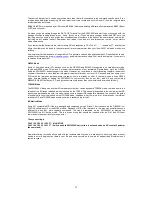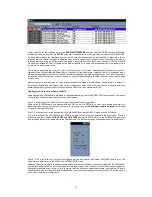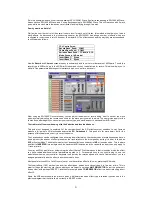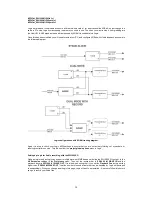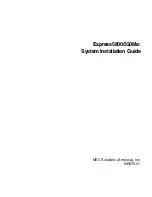
26
The advantages of using the XGEdit mixer as opposed to the Cubase VST ones are as follows
1: Instant response: Latency on playback doesn’t come into it as you are talking directly to the SW1000XG at a
hardware level, you will find that the mixer responds instantly
2: You get easy access to all the effects sends (make sure that Variation connection in XGEDIT is set to system
mode or you won’t be able to use the variation send control in the XGEDIT analogue mixer)
3: No CPU use. VST’s own mixer for audio is using CPU power to update, move and do its thing. Use the XGEDIT
mixer and your CPU will love you!
4: No need to ever use the VST mixer again. Once set up correctly, you can literally just use the XGEdit mixer should
you so wish. For VST style and Active movie plug in effects and VST EQ however you will still need to use the VST
mixer, as this passes its data to the XGEdit mixer (think of the XGEdit mixer as the last point in your mixing chain)
5: Full automation. Due to the fact that XGEdit is sending MIDI sysex data to VST to control the audio levels (and
everything else) on the SW1000XG, it means that in the VST event list for the SW1000XG Control track, you will find
that you have a complete record of all volume changes, pan settings, effects send levels etc. The bonus as well is
that if you get the full registered version of XGEdit you can also save set-ups as MIDI files, and post them straight
into VST as a setup bar. The XGEdit mixer doesn’t move with your edits however, so if that is important to you, you
will still have to use the CPU intensive VST mixer (more CPU intensive than the XGEdit one anyway!)
Gary Gregson has posted some diagrams, which cover the various options available for configuration of Hubis
loopback and also the HWDCABLE program that comes with it. The VST routing map is shown in the following one.
You can try these options should you so wish, the one we have detailed, we feel is the easiest to set-up, and the
setting which we use here at Yamaha when doing demos at shows.
And that as far as the Audio editing and mixing side is pretty much all that there is to it. Now when you have audio
tracks playing back inside VST, you can in effect (should you so wish) ignore the VST monitor and master mixers,
and just use the XGEDIT analogue floating window to control all of your audio track playback levels, pan settings and
effects levels (for the SW1000XG’s effect busses).

